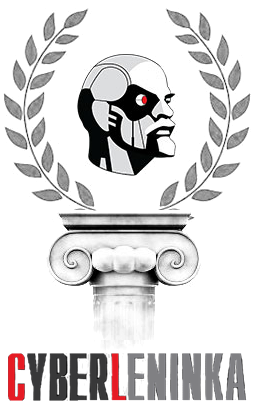- 12 December 2020
Article/Publication Details
Views: 2155
ROMAN INGARDEN’S CONCEPT OF THE FILMIC WORK OF ART: STRATA, SOUND, SPECTACLE
| Title in the language of publication: | ROMAN INGARDEN’S CONCEPT OF THE FILMIC WORK OF ART: STRATA, SOUND, SPECTACLE |
| Author: | ROBERT LUZECKY |
| Issue: |
HORIZON. Studies in Phenomenology. Vol. 9, №2 (2020), 683-702 |
| Language: | English |
| Document type: | Research Article |
| DOI : 10.21638/2226-5260-2020-9-2-683-702 | PDF (Downloads: 1911) |
Abstract
In the present paper, I suggest a modification to some aspects of Ingarden’s analyses of the sound-synchronized filmic work of art. The argument progresses through two stages: (1) I clarify Ingarden’s claim that the work of art is a stratified formation in which the various aspects present objectivities; (2) I elucidate and critically assess Ingarden’s suggestion that the filmic work of art is a borderline case in respect to other types of works of art—paintings and literary works. Here, I identify a problem with Ingarden’s claims about the function of sound in the concretized filmic work’s presentation of its fictive world. Ingarden identifies the presented universe of the filmic work of art as a habitus of reality, but Ingarden seems oddly conflicted with respect to his notion of habitus. I argue that this stems from Ingarden’s conceptualization of the filmic work of art as primarily composed of the stratum of represented “visible aspects” in both the cases of the silent film and the sound-synchronized film, and his restriction of the role of phonetic content in the latter. I suggest that were we to reconceptualise the role of aurally presented phonetic content in the concretized sound-synchronized film, we could better understand how film has the seeming magical capacity to transfix us.
Key words
Ingarden, film, sound, ontology, silent film, aesthetics.
References
- Barthes, R.(1981). Camera Lucidia: Reflections on Photography (R.Howard, Trans.). New York: Hill & Wang.
- Bazin, A.(2005). What is Cinema? (H.Gray, Trans.). Berkeley: University of California Press.
- Bradley, E.(2004). The First Hollywood Musicals: A Critical Filmography of 171 Features, 1927 Through 1932. New York City: McFarland and Company.
- Carroll, N.(1995). Towards an Ontology of the Moving Image. In C.A.Freeland, & T.E.Wartenberg (Eds.), Philosophy and Film (68–85). New York & London: Routledge.
- Dziemidok, B., & McCormick, P.J.(Eds.). (1989). On the Aesthetics of Roman Ingarden: Interpretations and Assessments. Dordrecht: Kluwer Academic Publishers.
- Haltof, M.(1998). Film Theory in Poland Before World War II.Canadian Slavonic Papers / Revue Canadienne, 40 (1/2), 67–78.
- Helman, A.(1975). The Influence of Ingarden’s Aesthetics on the Theory of Film. In P.Graf, & S.Krzemień-Ojak (Eds.), Ingarden and Contemporary Polish Aesthetics (97–107). Warsaw: Państwowe Wydawnictwo Naukowe.
- Helman, A., Osadnik, W.M., Plesnar, Ł., & Wilk, E.(1994). Some Remarks on the Application of Ingarden’s Theory to Film Studies. In A.-T.Tymieniecka (Ed.), Allegory Revisited; Ideals of Mankind, Analecta Husserliana, Vol. 41 (377–397). London: Kluwer Academic Publishers. https:// doi.org/10.1007/978-94-011-0898-0_28
- Ingarden, R.(1973a). The Cognition of the Literary Work of Art (R.A.Crowley, & K.R.Olson, Trans.). Evanston: Northwestern University Press.
- Ingarden, R.(1973b). The Literary Work of Art. An Investigation on the Borderlines of Ontology, Logic, and Theory of Literature (G.G.Grabowicz, Trans.). Evanston: Northwestern University Press.
- Ingarden, R.(1989). Ontology of the Work of Art (R.Meyer, & J.T.Goldwait, Trans.). Athens: Ohio University Press.
- Lewicki, B.(1935). Budowa utworu filmowego. Życie Sztuki, 2, 69–87.
- Lissa, L.(1937). Muzyka i film. Studium z pogranicza ontologii, estetyki i psychologii muzyki filmowej. Lwow: Ksiegarnia Lwowska.
- Malherbe, O.(2016). Roman Ingarden et le Cinéma: entre visibilté et musicalité. Studia Phaenomenologica, 16, 185–214.
- Mitscherling, J.(1997). Roman Ingarden’s Ontology and Aesthetics. Ottawa: University of Ottawa Press.
- Mitscherling, J.(2004). The Identity of the Architectural Work of Art. Contemporary Issues in Aesthetics (Supplemental volume of Symposium, 8 [3]), 491–518.
- Mitscherling, J.(2010). Aesthetic Genesis: The Origin of Consciousness in the Intentional Being of Nature. Toronto: University of America Press.
- Mishima, Y.(1990). The Temple at Dawn (E.D. Saunders, & C. S. Seigle, Trans.). New York: Random House.
- Morawski, M.(1985). Ingardenowska koncepcja sztuki filmowej. Kwartalnik Filmowy, 8 (4), 17–32.
- Osadnik, W.M., & Plesnar, Ł. A.(1991). On the Sign Character of the Representing Stratum in a Film as a Work of Art. In A.-T.Tymieniecka (Ed.), Ingardeniana III: Roman Ingarden’s Aesthetics in a New Key and the Independent Approaches of Others. Analecta Husserliana, Vol. 33 (63–78). London: Kluwer Academic Publishers. https://doi.org/10.1007/978-94-011-3762-1_2
- Płotka, W.(2017). Early Phenomenology in Poland (1895–1945): Origins, Development, and Breakdown. Studies in East European Thought, 69 (1), 79–91. https://doi.org/10.1007/s11212-017- 9274-0
- Rudnick, H.H.(Ed.). (1990). Ingardeniana II: New Studies in the Philosophy of Roman Ingarden. Analecta Husserliana, Vol. 30. London: Kluwer Academic Publishers.
- Spiegelberg, H.(1965). The Phenomenological Movement: A Historical Introduction I. The Hague: Martinus Nijhoff.
- Szczepańska, A.(1989). The Structure of Artworks. In B.Dziemidok, & P.J.McCormick (Eds.), On the Aesthetics of Roman Ingarden: Interpretations and Assessments (21–54). Dordrecht: Kluwer Academic Publishers.
- Tarkovsky, A.(1986). Sculpting in Time: Reflections on the Cinema (K.Hunter-Blair, Trans.). Austin: University of Texas Press.
- Tymieniecka, A.-T.(Ed.). (1976). Ingardeniana: A Spectrum of Specialized Studies Establishing the Field of Research. Analecta Husserliana, Vol. 4. Boston: D.Reidel Publishing Company.
- Tymieniecka, A.-T.(Ed.). (1991). Ingardeniana III: Roman Ingarden’s Aesthetics in a New Key and the Independent Approaches of Others. Analecta Husserliana, Vol. 33. London: Kluwer Academic Publishers.
- Wachter, D. von. (2013). Roman Ingarden’s Ontology: Existential Dependence, Substances, Ideas, and Other Things Empiricists Do Not Like. In A.Chrudzimski (Ed.), Existence, Culture, and Person. The Ontology of Roman Ingarden (55–82). Frankfurt: Ontos Verlag.

This work is licensed under a Creative Commons Attribution-NonCommercial 4.0 International License.

|
|
|
|
|

|
|
|
|
|

|
|
|
|
|
|
|
|
|
|
|
|
|
|
|
|
|
|
|
|
|
|

|
|
|
|
|
|
|
|
|
|
|
|
|
|
|
|
|
|
|
|
|
|
|
|
|
|
|
|

|

|
Social networks:





